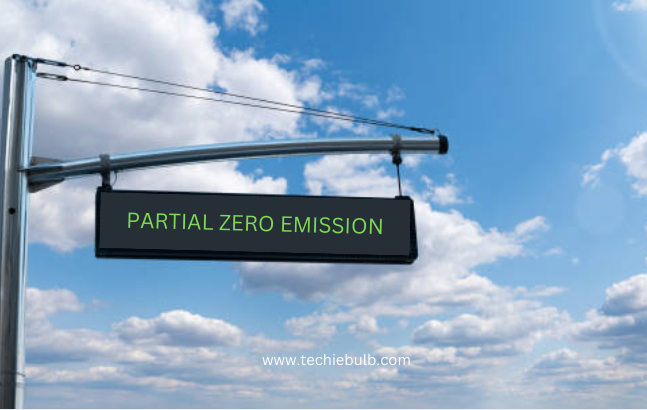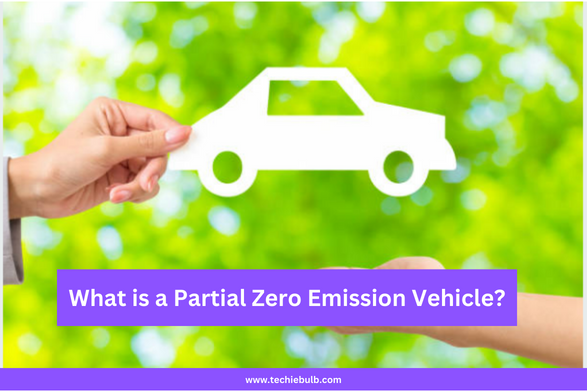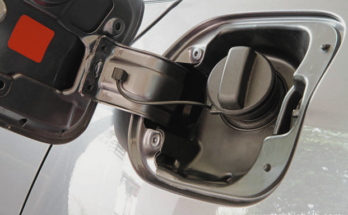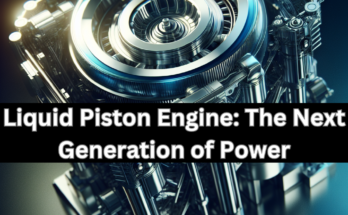The car industry is making strides towards a cleaner, eco-friendly future. They have developed Partial Zero Emission Vehicles (PZEVs) that aim to reduce the negative impact of traditional cars on the environment.
PZEVs are a midpoint between regular cars and fully electric or hydrogen-powered vehicles, and they utilize advanced technology to decrease harmful emissions and improve air quality.
This article serves as an introduction to PZEVs, exploring their emission control systems, combustion processes, and how they contribute to air quality. PZEVs not only reduce greenhouse gas emissions but also provide a more sustainable driving experience.
There are challenges and opportunities ahead for PZEVs, including continued innovation, infrastructure development, and collaborative efforts to promote a greener future for the automotive industry. Ultimately, PZEVs are a step towards a cleaner and more sustainable future, and we can all contribute to this goal by choosing eco-friendly transportation.
Understanding Partial Zero Emission Vehicles

Partial Zero Emission Vehicles, or PZEVs, represent a significant step forward in addressing the environmental challenges associated with conventional vehicles. These vehicles are designed to substantially reduce harmful emissions while maintaining the practicality and convenience of traditional internal combustion engine vehicles.
- Advanced Emission Control Systems:
At the heart of PZEV technology lies advanced emission control systems. These systems go beyond standard requirements, incorporating state-of-the-art catalytic converters and engine management technologies. The catalytic converters play a crucial role in converting pollutants like nitrogen oxides (NOx), carbon monoxide (CO), and hydrocarbons (HC) into less harmful substances. Enhanced engine management systems optimize combustion processes, resulting in cleaner emissions.
- Optimized Combustion:
PZEVs leverage advanced combustion technologies to enhance the efficiency of fuel combustion. By optimizing the fuel-air mixture and combustion process, these vehicles minimize the production of pollutants during engine operation. This not only reduces emissions but also contributes to improved fuel efficiency, making PZEVs a sustainable and economical choice.
- Zero Evaporative Emissions:
Evaporative emissions, stemming from fuel vapors escaping the vehicle’s fuel system, are a significant contributor to air pollution. PZEVs address this issue by incorporating advanced fuel systems and vapor recovery technologies. These innovations prevent fuel vapors from being released into the atmosphere, making PZEVs more environmentally friendly.
- Extended Warranty on Emission Components:
To instill confidence in consumers and underline the long-term effectiveness of emission control systems, manufacturers often provide extended warranties on specific emission-related components. This commitment encourages proper maintenance and ensures sustained emission reduction benefits throughout the lifespan of the vehicle.
- Stricter Emission Standards Compliance:
PZEVs adhere to and often exceed stringent emission standards set by regulatory authorities. These standards define the allowable limits of pollutants, and PZEVs undergo rigorous testing to ensure compliance. By surpassing these standards, PZEVs contribute significantly to improving air quality and reducing the environmental impact of vehicle emissions.
- Consumer Education and Behavior:
PZEVs promote environmentally conscious driving behaviors among consumers. Educating drivers about the benefits of PZEVs and encouraging responsible vehicle use, including regular maintenance and proper fueling practices, maximizes the overall impact on emission reduction.
Environmental Impact of PZEVs
As the automotive industry seeks greener alternatives, understanding the environmental impact of PZEVs becomes paramount. PZEVs offer a compelling solution by significantly reducing greenhouse gas emissions and air pollutants, thus mitigating their environmental footprint.
- Reduced Greenhouse Gas Emissions:
PZEVs play a vital role in reducing greenhouse gas emissions, contributing to global efforts to combat climate change. By employing advanced emission control technologies and optimizing combustion processes, PZEVs minimize the release of carbon dioxide (CO2) and other greenhouse gases associated with traditional vehicles.
- Improved Air Quality:
One of the immediate benefits of PZEVs is the improvement in air quality. The reduction in nitrogen oxides, carbon monoxide, and hydrocarbons helps decrease smog formation and respiratory issues in urban areas. This positive impact on air quality enhances the overall health and well-being of communities.
- Addressing Evaporative Emissions:
PZEVs tackle the issue of evaporative emissions, which can contribute to ground-level ozone formation and air pollution. By implementing advanced fuel systems and vapor recovery technologies, PZEVs minimize evaporative emissions, further enhancing their environmental credentials.
- Sustainable Driving Practices:
The promotion of sustainable driving practices among PZEV owners adds to the positive environmental impact. When consumers are aware of the benefits and adopt eco-friendly behaviors, such as regular vehicle maintenance and responsible fueling practices, the cumulative effect contributes to a greener and more sustainable transportation ecosystem.
PZEVs Real-World Examples and Success Stories
- Automaker Initiatives:
Leading automotive manufacturers have embraced the PZEV concept, integrating it into their vehicle lineups. Companies such as Honda, Toyota, and Ford have introduced PZEV-compliant models, offering consumers a wide range of options across different vehicle segments. These initiatives demonstrate the industry’s commitment to providing cleaner transportation choices.
- PZEVs Beyond Passenger Cars:
PZEV technology is not limited to passenger cars alone. Manufacturers have extended this eco-friendly approach to other vehicle types, including SUVs, trucks, and commercial vehicles. This broad application showcases the versatility of PZEV technology and its potential to make a significant impact across various transportation sectors.
Challenges and Opportunities for PZEVs
While PZEVs present a promising solution to reduce emissions, they are not without challenges. Addressing these challenges and capitalizing on opportunities will be crucial for the widespread adoption and success of PZEV technology.
- Infrastructure Support:
To encourage PZEV adoption, there is a need for supportive infrastructure, including charging stations and refueling facilities. While PZEVs do not require the extensive charging infrastructure needed for electric vehicles, having adequate support in place is essential for their widespread acceptance.
- Consumer Awareness and Education:
Increasing consumer awareness and education about the benefits of PZEVs is paramount. Many consumers may not be familiar with the advantages of PZEV technology, and initiatives to inform and educate the public will play a vital role in driving adoption.
- Government Incentives:
Governments can play a pivotal role in promoting PZEV adoption by offering incentives and subsidies. These could include tax credits, rebates, or other financial incentives to make PZEVs more attractive to consumers. Policy support will be instrumental in accelerating the transition to greener transportation.
- Collaboration and Research:
Continued collaboration between government agencies, automakers, and research institutions is essential for advancing PZEV technology. Investing in research and development will enable further innovations, making PZEVs even more efficient and environmentally friendly.
- Global Adoption and Standardization:
While PZEV technology has gained traction in certain regions, achieving global adoption requires a standardized approach. Global collaboration in setting emission standards and promoting PZEV technology will create a more consistent and widespread impact.
Conclusion
It’s important to note that while PZEVs significantly reduce emissions compared to traditional vehicles, they are not entirely emission-free. PZEVs still rely on internal combustion engines, albeit with advanced emission control technologies. As the automotive industry continues to evolve, PZEVs represent an intermediate solution toward cleaner transportation options, complementing the broader efforts to transition to fully electric or hydrogen fuel cell vehicles for a more sustainable and environmentally friendly future.




